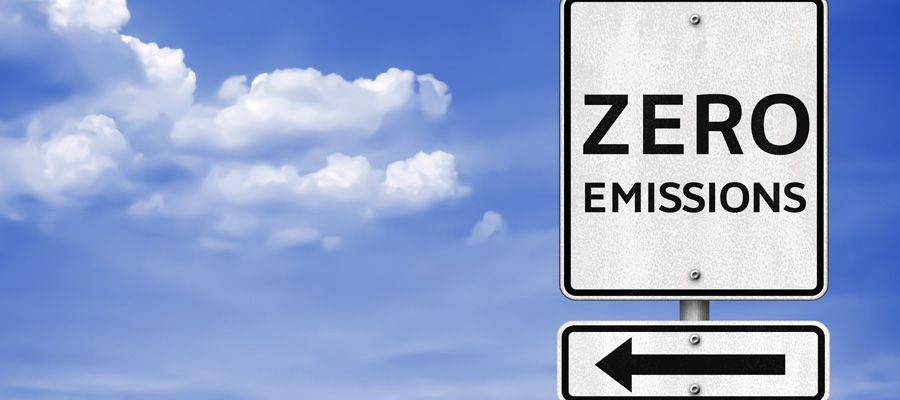Getting to Net-Zero in Canada: Summary

Scale of the problem, government projections and daunting challenges
The urgency of mitigating climate change through significant emission reductions is globally recognized—most recently with the call to transition away from fossil fuels at the United Nations Framework Convention on Climate Change Conference of the Parties (COP28). Canada has long accepted this challenge: its latest pledge is to reduce emissions to 40–45% below 2005 levels by 2030 and net-zero by 2050. While it is easy to make long-range political promises, it is much harder to have a realistic plan to achieve these important goals.
In June 2023, the Canada Energy Regulator (CER) published Canada’s Energy Future 2023, which offered—for the first time—energy supply scenarios that align with Canada’s 2050 net-zero target. These scenarios call for major changes in Canada’s energy supply, including reducing oil and gas production, a several-fold increase in renewable generation from solar, wind and biomass, a near tripling of nuclear capacity, and a many-fold increase in technologies such as carbon capture, utilization and storage (CCUS). For comparison, CER also provided a scenario which showed that with policy measures in place as of March 2023, emissions would be only 16% lower than 2022 levels by 2050.
Despite years of promises and plans to reduce emissions, by 2021 Canada’s emissions had decreased by only 8.5% from 2005 levels.
This report reviews the evolution and scale of the emissions problem during the fossil fuel era and the current energy supply picture in Canada; examines the CER net-zero energy supply projections as well as their assumptions and policy implications; and makes recommendations for modifications and policy emphasis that would increase the chances of Canada meeting its net-zero commitments.
Canada’s current energy usage is assessed to paint a clear picture of the challenges of reaching net zero emissions by 2050. Despite years of promises and plans to reduce emissions, by 2021 emissions had decreased by only 8.5% from 2005 levels, and the Canadian Climate Institute’s early estimates indicate a 2.1% increase in 2022, moving Canada further from its goals.
Canada’s heavy reliance on fossil fuels for domestic energy supply and export revenue only deepens this challenge. In 2022, these fuels met 77.4% of the nation’s end-use energy demand, and the country exported 63% of its oil, 34% of its gas, and 67% of its coal production. The energy sector was responsible for 8.9% of Canada’s overall GDP, with more substantial impacts in specific provinces: 21% of Saskatchewan’s GDP, 30% of Newfoundland and Labrador’s, and 31% of Alberta’s.
On a per capita basis, Canadians consume nearly five times as much energy as the global average and emit three times the global average of emissions. While over 80% of Canada’s electricity supply is emissions-free due to generation from hydro, nuclear, wind and solar, electricity represented only 17.6% of end-use energy demand in 2022.
Canadians consume nearly five times the global average of energy per capita and emit three times the global average of emissions.
The CER net-zero scenarios are based on an economic analysis of current and announced government policies, technical factors and the most comprehensive knowledge base of Canadian energy data available, and hence provide an important starting point for understanding what a transition to net-zero emissions might require.
Although some of the assumptions made in CER’s net-zero scenarios on price trends and technology deployment are extremely optimistic and therefore unlikely to be realized, they provide a useful foundation for understanding the true scale of the policies and changes that will be needed in order to achieve Canada’s net-zero mandate.
Key conclusions and recommendations include:
- Major policy improvements are required: Policies in place as of March 2023 would see only a 16% reduction of emissions from 2022 levels by 2050.
- Overreliance on industrial carbon removal introduces high risk: CER’s projections of a 34 to 39-fold increase in CCUS and a several thousand-fold expansion of direct air capture (DAC) introduce very high risk given the cost and slow rate of deployment of CCUS and the very high cost and early stage of development of DAC. Reliance on these technologies must be reduced to lower risk in a credible net-zero strategy. This will require significantly reduced reliance on fossil fuels compared to the CER scenarios.
- Overreliance on hydrogen introduces high risk: CER’s projection that hydrogen can grow from almost nothing to 11–12% of end-use energy supply by 2050 is extremely optimistic. Current production of hydrogen is very energy- and emissions-intensive and producing it from electricity consumes 54–82% of the electrical energy in the conversion process. Although some hydrogen will be needed, a more realistic goal may be the more conservative 5% estimate of the International Energy Agency (IEA).
- Increased electricity generation will be needed to lower risk: To reduce risk from overreliance on fossil fuels, CCUS, DAC and hydrogen, electricity generation will need to increase from the 39–41% of end-use energy supply in the CER net-zero scenarios. Increasing electricity’s share of energy supply to 55%, as assumed in the IEA’s net-zero roadmap, would be a more realistic target. This will require increased renewable generation and infrastructure compared to the CER net-zero scenarios.
- Major improvements in forest management practices are required: Existing forest management practices have seen Canada’s forests become major net emitters. Tripling the sequestration capacity of Canada’s forests, as assumed in CER’s net-zero scenarios, will require major improvements in forest management practices.
- Reducing energy demand must become a major priority: Reducing energy consumption is the low-hanging fruit, as it eliminates the cost of new energy production and emissions reduction infrastructure. Prioritizing conservation, efficiency and behavioral change must become a major government policy priority.
- Despite the formidable challenges ahead, Canada’s path to net-zero is achievable with a clear, actionable plan that recognizes the scale of the undertaking and the limitations of potential solutions. This report underscores the need for a comprehensive strategy with practical, scalable solutions and a robust policy framework that will steer Canada toward a sustainable, net-zero future by 2050.

Source: Environment and Climate Change Canada, National Inventory Report 1990–2021: Greenhouse gas sources and sinks in Canada, April 2023, https://publications.gc.ca/collections/collection_2023/eccc/En81-4-2021-3-eng.pdf. Note: Emissions from land use, land use change and forestry are not included in Canada’s official National Inventory Report.
This article is a summary of David Hughes’ report, Getting to Net-Zero in Canada: Scale of the problem, government projections and daunting challenges, available at: https://www.policyalternatives.ca/netzero
Topics: Climate change & energy policy



